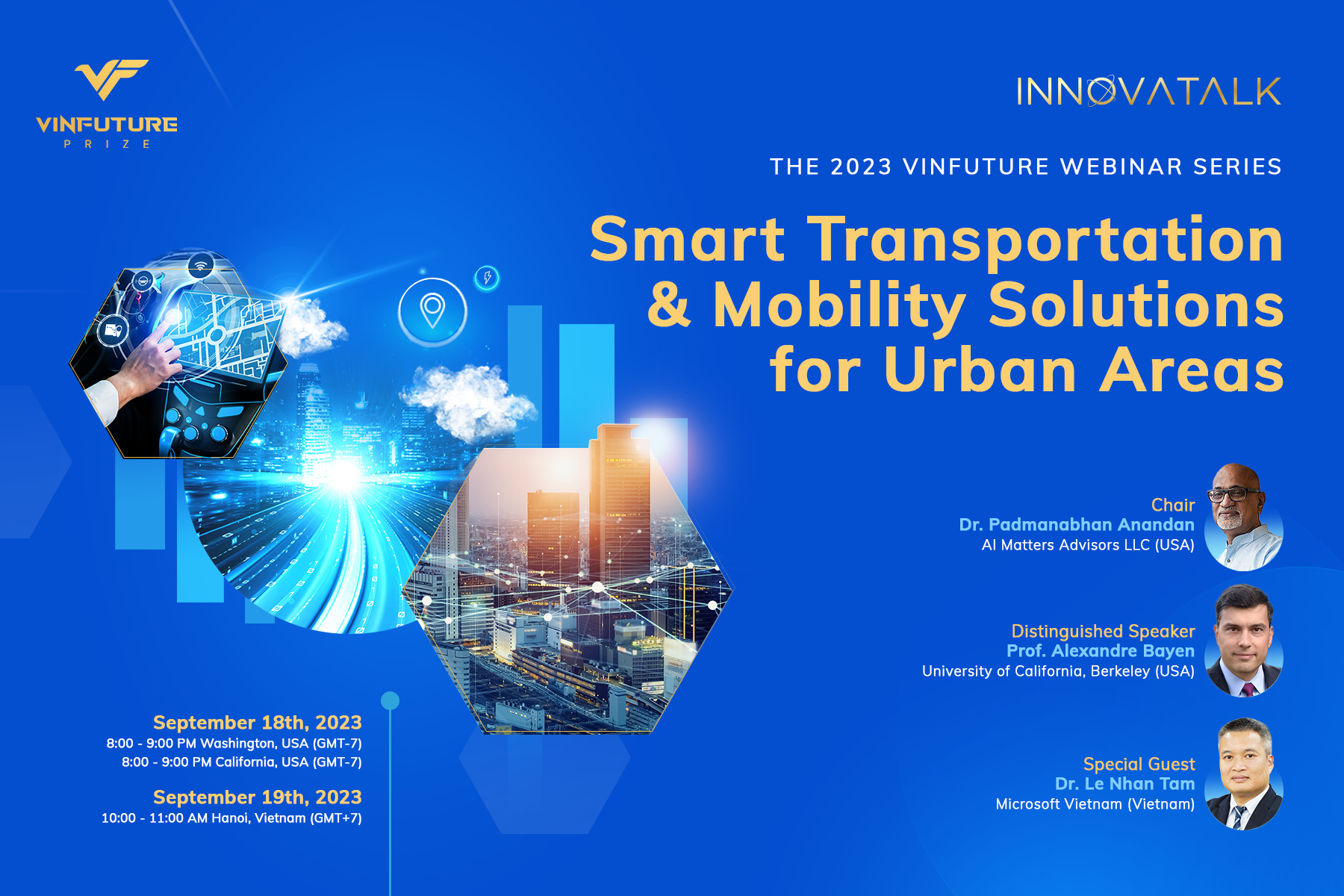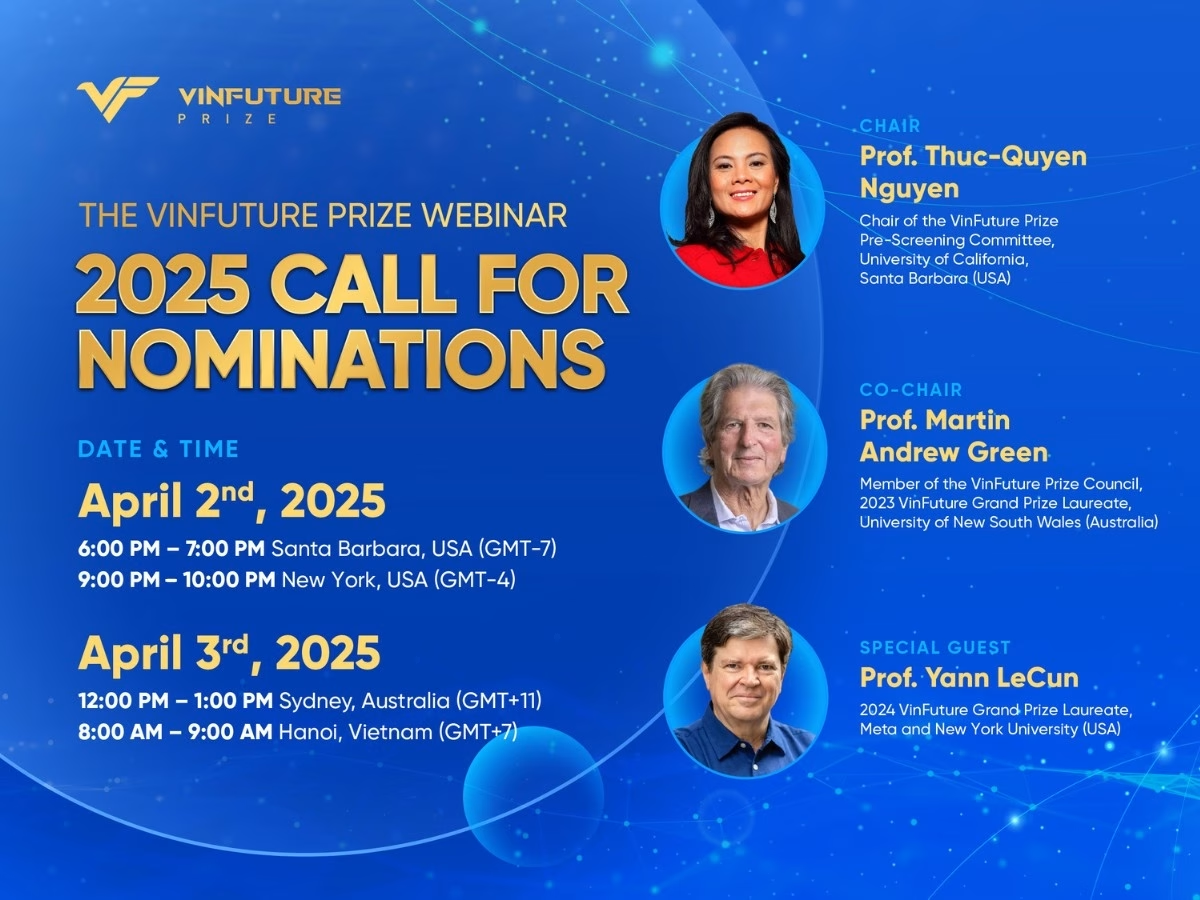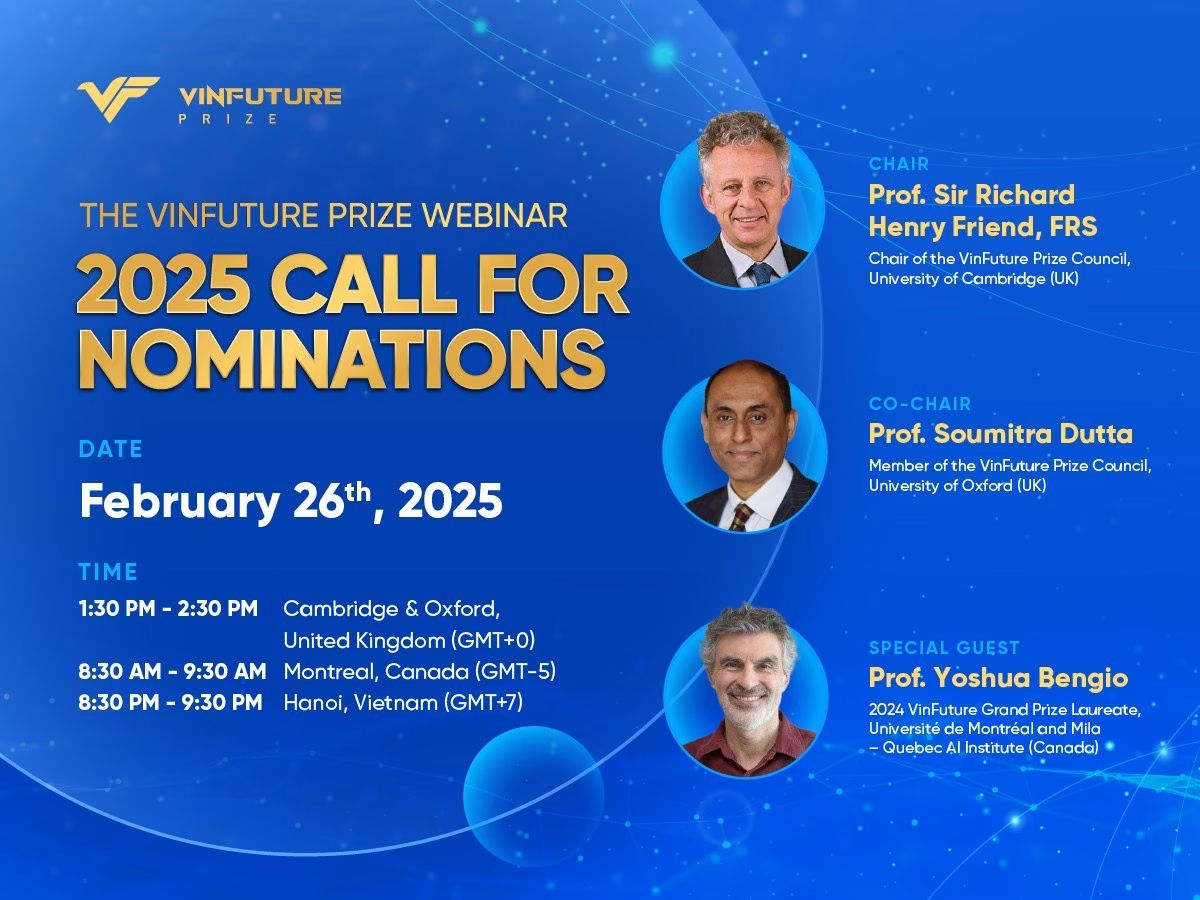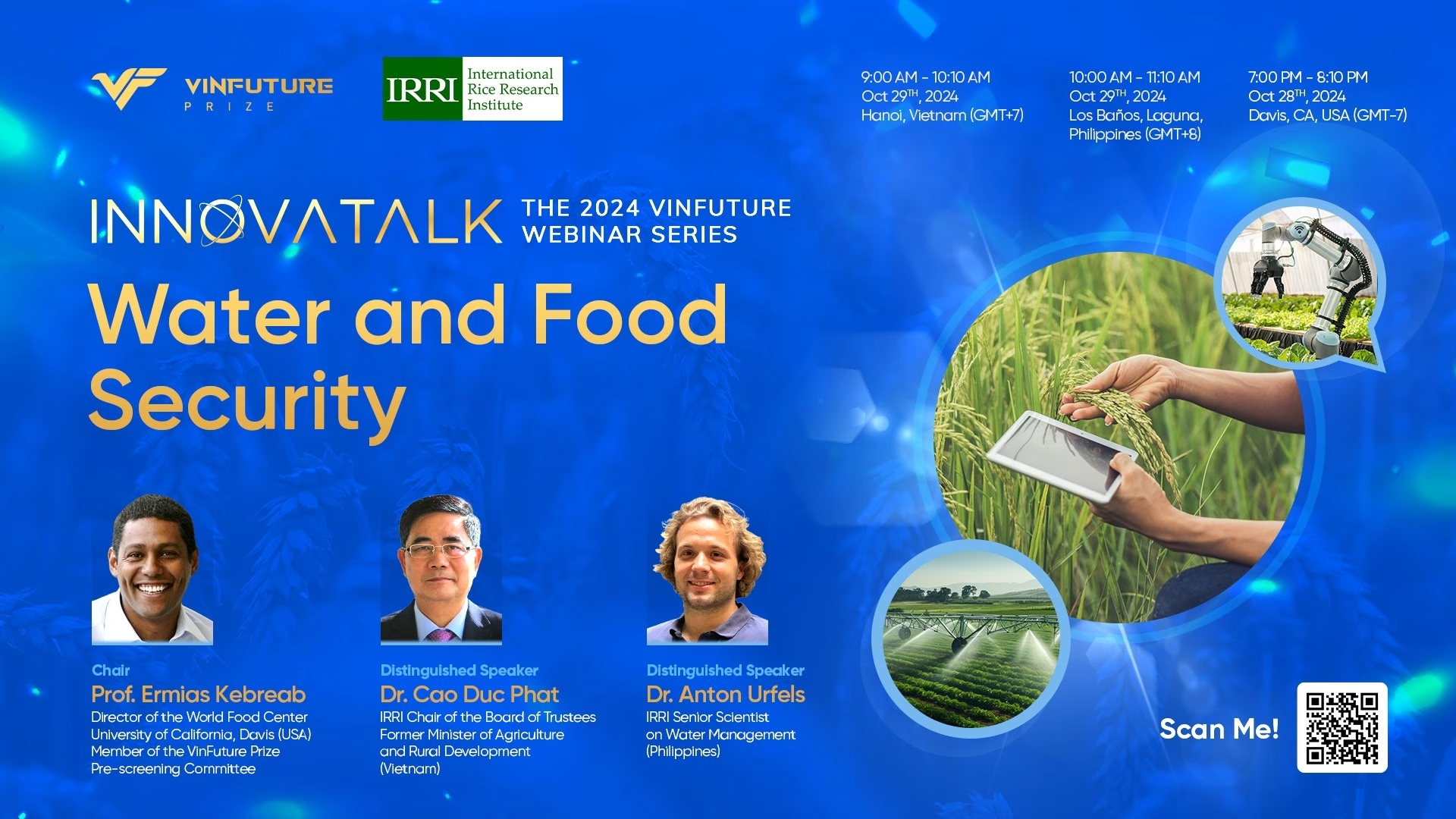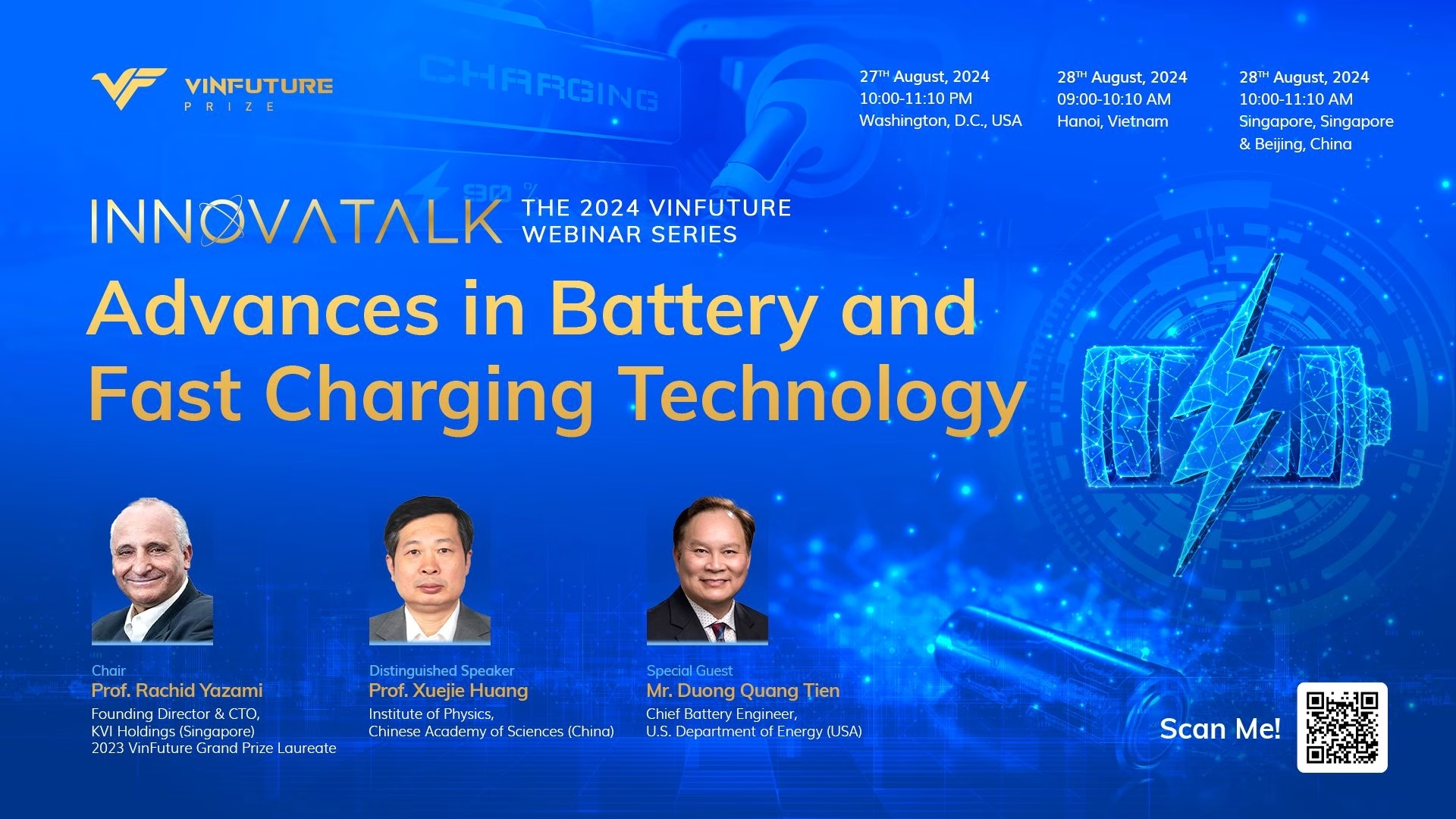- Register now: https://forms.gle/R8g3aNfGHqhfPZGBA
Leading experts in the fields of IoT, computer vision, artificial intelligence, and transportation technologies will convene for this talk. Dr. Padmanabhan Anandan, a renowned scientist in the field of Computer Vision and Artificial Intelligence and a Member of the VinFuture Prize Council, will chair the discussion. Joining him as speakers are Professor Alexandre Bayen, the Liao-Cho Professor of Engineering at the University of California, Berkeley, and Director of its Institute of Transportation Studies, and Dr. Le Nhan Tam, the Chief Technology Officer (CTO) at Microsoft Vietnam, who has held various positions ranging from researcher to expert in major tech companies.
The panel will explore the potentials and challenges of developing smart transportation infrastructure in metropolitan areas, introducing the technologies that have been employed to enhance mobility, reduce congestion, and thereby elevate the living standards of the people. They will also provide insights into the successful implementation of these smart technologies in Vietnam.
“The answers lie in adaptive traffic management”
“It seems like the roads are always congested,” Dr. Anandan, the chair of this month’s webinar, said. “In other words, the more roads we build, the more occupied they become.”
According to Dr. Anandan, that’s the biggest challenge facing the urban transportation system and mobility today, besides increasing air pollution. They have all been traditional problems, but have just gotten worse. He believes the answers to these challenges clearly lie in adaptive traffic management and more usage of electric vehicles.
In explaining the concept of adaptive traffic management, Dr. Anandan listed four key functions combining IoT sensors and communication technology that have been used in smart transportation systems.
The first and most obvious is real-time control of traffic. Automatic sensors are used at traffic lights and intersections to decide when to turn the light on and off. “That’s something that has been used for some time, but probably nowadays, I could say it’s based on more modern computer vision, sensing technology, and IoTs,” he said.
The second application is informing drivers about traffic patterns and other information. This has become natural as most vehicles are connected to Wi-Fi and maps.
The third application involves parking management, using sensing technology to determine available parking spaces and communicating that information through Wi-Fi mechanisms.
The fourth application is in public transportation management, such as adjusting bus timing patterns to adapt to needs. This is also an application of IoT sensors and communication technology that can be made possible, according to Dr. Anandan.
“People, and cities tend to do this on a fixed basis, like increasing the frequency during peak hours and so on. But it’s very easy to imagine that you can actually do this on an adaptive basis, where you sense the traffic or the requirement of the congestion at the bus stops or how congested the buses are, to increase the frequency as needed,” he explained.
Attendees of the webinar on September 19th will have the opportunity to gain deeper insights into smart transportation technology from Professor Alexandre Bayen, the Director of the Institute of Transportation Studies (ITS) and the Liao-Cho Professor of Engineering at UC Berkeley. Professor Bayen holds professorships in Electrical Engineering and Computer Science, as well as Civil and Environmental Engineering. Additionally, he serves as a Faculty Scientist in Mechanical Engineering at the Lawrence Berkeley National Laboratory (LBNL).
Overcoming the barriers in Vietnam
From Microsoft Vietnam, Dr. Le Nhan Tam will contribute to the discussions with the perspectives of an IT expert and a key figure in several major IT companies in Vietnam. In a pre-event interview, Dr. Tam shared his belief that smart transportation solutions can bring significant changes to Vietnam’s cities.
“It will help to reduce traffic congestion, save time, increase traffic safety, and improve the environmental issues. It’s also the chance to promote new technology for the energy 4.0 revolution in smart city development,” he said.
Despite those benefits, there are a lot of barriers to implementing smart transportation solutions in Vietnam. Two main aspects mentioned by Dr. Tam are law/regulation and the technical-financial infrastructure of the cities. According to the CTO of Microsoft Vietnam, a grand strategy is necessary, and that requires multi-stakeholder collaboration.
“The first important thing is a strategy and a vision for the country and for the different cities, depending on their particular technical infrastructure and financial conditions. And if so, we need to get involvement and participation from different stakeholders, from the government, from the enterprises, and also from citizens who are end users of the service,” said Dr. Tam.
IT infrastructure is undoubtedly the key to implementing successful smart transportation systems. However, while focusing on applying new modern technologies like AI, it’s important to note that we need to prepare the data and data analytics services to help enterprises build social infrastructure on new technology.
Over the past several years, Microsoft has worked to enhance the IT capabilities of various stakeholders. They have partnered with the Ministry of Transportation and some cities to implement initiatives such as intelligent operations centers for transportation. Through Microsoft Azure, the cloud computing services of Microsoft, they have also provided technical support and platforms for startups, including IBM (using AI to optimize logistics and supply chain processes) and Busmap (a mobile application allowing users to track bus services).
The pace of technological advancement often outpaces that of regulation. To allow technology initiatives like smart transportation and mobility to progress, Dr. Le Nhan Tam believes that there should be some “sandbox” models offering innovators the opportunity to test and prove the success of applying cutting-edge technology in real life. These are key elements in transforming not only the technology we use but also our mindset from a fixed to an adaptive one, which is at the core of smart solutions.
